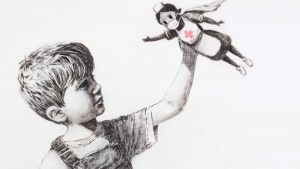
10 Minute Thought Piece: Getting the best out of online therapy with children, in spite of the glitches!

Image from unsplash.com
It is about 11.30 on a cold January evening in 1975 and an intense afro-topped moustachioed young man is hunched over a tired baby Grand in the Koln Opera House, fingers poised on keys. He has driven five hours in a clapped-out Renault 4 from Zurich, and has back pain and a terse temper to show for it. The piano is a bruised Bösendorfer normally used for bashing out tunes in opera practice. Its impressive big brother, the Concert Grand he is supposed to be playing, is locked safely away somewhere no one can get at.
Someone has hastily replaced the baby’s broken strings and tuned the instrument up as best they could, but midrange black keys are muffled, the foot pedals don’t work properly and both upper and lower registers are all over the place. He will have to knead and press the thing into life with a sorcerer’s spell-binding ingenuity. A gifted pitch-perfect pianist and perfectionist, he’s inclined to walk away from the whole fiasco, if it wasn’t for the 1400 expectant concert – Goers and his promise to the irrepressible teenage organiser, Vera Brandes. The tension is high and, as Brandes later recalls in her native German: ‘you could have sawn a cube out of the air.’ The room is silent with anticipation. When he presses down those keys, something enchanting happens; the palpable tension dissolving into sonorous trickles, streams and flows of melody. This is Keith Jarrett, and this is the start of an hour or so of improvised musical magic; no score, just one man, one piano and a stream of consciousness riffing in shades of blues, gospel, folk and jazz, his voice sometimes heard imploring the notes out of himself or crying out in raptured accompaniment. Thankfully for us, the moment was caught on record, although Jarrett himself is less enamoured and would prefer the recording was destroyed. If you are listening, you are listening to a consummate master of musical improvisation.

Image from unsplash.com
Improvisation
There are, of course, two types of ‘Improv’ here; not just eschewing sheet music for free-flow, but also a kind of ‘making-do’ in less than favourable circumstances. Scrolling back a few hundred years, we might find ourselves in a church or chapel in the port town of Naples, listening to choral practice. The sound of singing drifts down the narrow alleyways. Prostitutes were ubiquitous to Naples, and so were their illegitimate children. Not all were able to stay with their mothers, and some ended up in one of four charity schools for orphan. By the mid-1500s these establishments had set themselves up as music schools, and by the 17th century they were well established as the first such professional establishments in Europe.
In marvelling at such a development, it is worth wondering just how these places converted groups of street urchins into choral or keyboard maestri to rival any in 17th century England or Germany. Few of the boys were literate, and most intolerant of long and boring lectures on musical theory. How do you teach a child so foreign to structure or discipline? The answer, I like to imagine, was the improvisation of an improvisation called Partimento. The four Neapolitan Conservatoires found a way of teaching a highly complex musical knowledge by making students listen to template bass lines and then learning to riff various voice or keyboard parts on top. In place of the ambitious French composer Rameau’s determined enlightenment ‘Traité de l’harmonie,’ in Naples you were likely to witness an oral dialectic between master and pupil, poetically described as a ‘ritual model of shared symbolic practices.’
This sounds more like playing together than teaching the mathematical abstractions of music theory, although admittedly the analogy risks romanticising gruelling years of education and training. Despite valiant attempts to submit Partimento teaching to rigorous theoretical principles, like the oblique incantations of a martial arts Sensei, the method continues to elude perspicuity. That, as Jarrett would tell you, is the point of improvisation; the exponent may be gifted in method and technique, but the performance is absolutely of the moment and must have a life of its own.

Image from unsplash.com
Tobius or Tobi, as he now insists everybody calls him, does not look like a candidate for improvisation. He is a beautiful-looking 6 year old adopted boy with a mop of blond hair falling casually across watchful azure eyes. He looks the picture of cool, but struggles to divine how people think, feel or get on, and unable to properly decipher the secret language of getting on, he often finds the world startlingly perplexing and intolerably unpredictable. Tobi needs everything his own way and just so, and will not be told, which is why he isn’t in school. My foreign thoughts and comments are not welcome. Still, we manage, with mum’s essential guidance, to establish a fragile affinity. That’s when a global pandemic strikes and we find ourselves locked down in our respective homes, having to improvise psychotherapy through screens. It is not something either of us is practiced at, and the situation does not look promising.
What humans and animals make of unpromising situations is a subject of perennial fascination to artists, writers and filmmakers. A boy bobbing in a lifeboat on a vast empty ocean, with only a wild Bengal tiger for company, is the unpromising circumstance of Yann Martel’s Booker prize winning novel The Life of Pi. The boy Pi tells of his implausible survival to sceptical investigators, who ask for something more believable. He gives them a second story that is more gruesomely realistic. We, the audience, are left choosing between the two. Martel invites us to consider the rich narrative metaphors and contemplate on the nature of God, His mystery, His will. But the story hits home all the more powerfully as contemplation on a profound metaphysical question; aren’t our lives and the stories we make up about them all, in some essential way, improvised; are we not just temporal, transient embodied improvisations of life itself, conscious yet bound, actors in some ‘insubstantial pageant’; making it up as we go along?

Image from unsplash.com
In weekly ‘virtual’ sessions with Tobi, my role as an observer becomes an issue. No longer able to actively direct me in play schemes, he finds my impassive gaze intrusive and over-powering. I am sitting there like Martel’s Bengal or Blake’s burning eyed ‘Tyger,’ perhaps looking impenetrable and voracious when I need to be more like Judith Kerr’s Tiger Who Came to Tea. Digging around I find a tiger of my own, a large soft toy with golden amber stripes all the way to the tip of his furry tail. ‘Stripes’ makes a wordless appearance on the sofa one day, and the following session says a word or two in the childish lisp of a naive and lonely cub. After that he cannot stop saying and asking things that his adoptive ‘dad,’ could never have dreamt to broach; what is it like to be adopted, to fear being hunted, to misunderstand humans, to hate your sister or love spaghetti? Now Stripes misses Tobi and Tobi misses Stripes, postcards are exchanged, mum and I can join in, and we can talk about what it’s like to have lost everything and fear losing it again. The story of Pi invites us to wonder whether it matters if the tiger, Richard Parker, is real or representative or illusory, any more than it matters whether Tom Hank’s basketball ‘Wilson,’ in the film Castaway, is a ‘transitional object’ or companion dreamt up in desperate straits. There are as many comforting convictions and reassurances to be had in basketball heads and CGI tigers as in theoretical constructs or analytic interpretations. We cannot, all being said and done, yet divine the mystery of a brain that produced Parkers and Wilsons. We can, though, simply wonder at tigers and basketballs that can and do save lives.
Psychotherapists, like all so-called experts on how to live a less anxious life, are arguably at their best when they can let themselves improvise, even though this may involve, in the words of psychoanalyst Philip Bromberg, ‘Stumbling along, hanging in and making the most of it.’ Of course, I would say that, this being my own idiosyncratic gig. So, what of Tobi and Stripes; what happens to them? I don’t know; the story is still unfolding. Perhaps there wasn’t exactly a tiger or a boy aged 6. Does it matter? I leave that up to you.
View more in-depth thinking from our guest bloggers on our Thought Pieces page.



